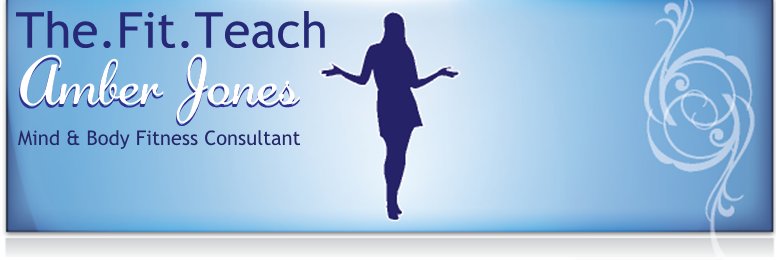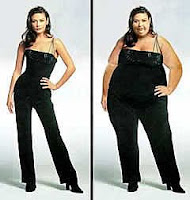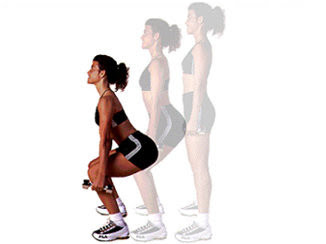Fiction. (Not TRUE) .....wrong
Contrary to long-held belief, strength training is—as new studies have shown—superior to steady-state cardio in caloric burn. In one University of Southern Maine study, participants blasted as many calories doing 30 minutes of weight training as they did running at a six-minute-per-mile pace for the same amount of time. Unless you're Lolo Jones, strength is your best bet.
The other huge benefit of weight training? It boosts your metabolism after your workout—and builds muscle that will further increase your fat-burning potential in the long run. "If you do steady-state cardio, when you leave the gym, that's it for your calorie burn," says David Jack, general manager of Competitive Athlete Training Zone in Acton, Massachusetts. "But when you do strength work, you'll continue to burn calories for up to 36 hours."
2. You can reduce cellulite through exercise.
Fact. (TRUE)......yep!
Cottage-cheese thighs can affect even the fittest athletes, and though exercise can't prevent cellulite, it can help reduce the appearance of those tell-tale dimples. Cellulite is fat, so calorie-blasting activities and the right nutrition can make your skin look smoother. Likewise, weight gain can make cellulite worse.
"Women lose about five pounds of muscle per decade, and they lose most of it where they don't use their muscles: where they sit. When they lose that muscle in their hips and thighs, the overlying layer of fat doesn't have much of a foundation, so it starts to get pockmarked," explains Wayne Westcott, Ph.D., author of No More Cellulite. "Strength training can play a major role to tone that muscle and get the firm foundation back."
Westcott recommends moves that target your hips, quads, and hamstrings, but says not to ignore your other muscles. "Since all strength exercises boost your metabolic rate, they'll decrease fat too," he says.
3. Crunches are one of the best moves to target your abs.
Fiction. (Not TRUE).......wrong.
You probably know crunches are old-school, but you may not know hwy they're not very effective. What's their weakness? Most women initiate crunches with their hip flexors without engaging much of their core. This may get the surface muscles in your abs, but it ignores the ones underneath, which are also essential to a flat stomach.
Plus, crunches mimic the sitting posture we use for much of the day. "We don't want to exacerbate this 'hips flexed/shoulders hunched' position," Jack explains. "The point of training is to fix the gaps and do something different. Crunches repeat a similar movement pattern.
A better bet for flat abs? Focus on moves like the plank and side plan that work often-neglected areas of your core. And don't forget your butt, too. Weak glutes push your stomach out and give you a belly even if you don't have one. (Not fair, we know!)
4. Exercise immediately improves your ability to learn.
Fact. (TRUE).....yep!
IT'S EASIER TO LEARN AFTER EXERCISE.
It sounds unbelievable, but it's true. In a study at the University of Muenster in Germany, participants who ran sprints learned new words 20 percent faster than those who did nothing. Other research has tied physical activity to improve attention and memory as well.
"Exercise is the best thing we can do to ready our brain to learn," says John J. Ratey, M.D., author of Spark: The Revolutionary New Science of Exercise and the Brain. "We know that the cells become more malleable and ready to make connections. And the learner is more focused, calm, and motivated—[she's] ready to learn."
Physical activity has one other major perk too: It increases production of the stem cells that develop new brain cells.
Ratey has found that both aerobic activities and strength training have benefits to the brain, but that more complicated forms of exercise—like tennis and soccer—provide the biggest boost. "You're taxing more parts of the brain in those activities, which helps it grow," he explains.
5. The morning is the best time of the day to exercise.
Fiction. (Not TRUE)....wrong.
but if you can get it done in the morning and out of the way -- do it!
If you have your pick of any time of the day, the late afternoon would be your ideal workout window. Muscle strength and body temperature both peak somewhere between 4 and 6 p.m., allowing you to work out heard with less effort. And you've eaten breakfast and lunch, meaning you'll have much more fuel in your tank.
"Also, your threshold for pain is at its highest in the afternoon and your mental clarity is still there," says Jack. "Of all the different variables, the most are in place at that time of day."
Studies have show that the body can adapt to peak performance at any time, though, so if you'd rather work out in the morning or evening, go for it. "The best time of day to train is the time that you're able to actually do it. That's most important," notes Jack.
6. Running a marathon increases your risk of a heart attack.
Fact. (TRUE) ........Yep.

A May 2009 study form Winnipeg's St. Boniface Hospital and the University of Manitoba confirmed what other studies had previously said: Marathons do cause short-term injury to the heart, but thankfully, they don't seem to cause lasting damage. In this study, MRIs were used to show abnormalities in the hearts of runners in the Manitoba Marathon. They tracked 14 athletes, and all showed cardiac stress immediately after the race. After a week of rest, however, the runners' hearts showed no long-term effects, and for most, heart function had returned to pre-marathon levels.
The key to staying safe? If you're a newbie, talk to your doc beforehand, and make sure you train enough for the big event. A big stressor to the heart comes when runners attempt to do much more on marathon day than they've done in training. Also, remember that the overall risk is still very low: It's estimated that there are only four to eight deaths per million marathon runners.
7. Lift weights quickly to increase the burn.
Fiction. (Not TRUE).....wrong.

Though it may seem counterintuitive, the opposite is actually true. When you blaze though each move, you often use momentum instead of your muscles, and you also increase your risk of injury. "If you go too fast, you'll muscle through areas that are weak," Jack says.
Do the same reps more slowly (try counting to three while you lift up, and another three while you lower) and you'll get more burn for your buck.
Westcott has done two slow-lifting studies published in the Journal of Sports Medicine and Physical Fitness. In each, on group did 10 reps of each exercise that lasted seven seconds per rep, while the other group did five reps in 14 seconds. At the end of the study, the "slow" group averaged 5o percent stronger than the regular-paced group.
Unfortunately, lifting slow can be torturous, too. Wescott says that in his study, only tow of the 15o people wanted to continue training the slow way. "It was too hard; they just didn't like it. So we use it as one of our tools in our toolbox, but not as our standard technique."
8. Stretch before you run. Fiction (Not TRUE)......wrong.
Stretching is a hot-button issue in running circles, and while "stretch before you run" used to be the conventional wisdom, new research has shifted this opinion. Recently, a review by epidemiologist Ian Shrier, M.D., of six stretching studies in the Clinical Journal of Sports Medicine found that none of the studies showed that stretching before exercise prevented injury.
Olympian Jeff Galloway has coached more than 250,000 runners and no longer recommends a pre-run stretch. "I used to be a huge advocate of stretching, but over the years, thousands of runners have described how they were injured by stretching." He says what when his runners stopped stretching, the injuries almost always went away.
But this doesn't mean that you should never stretch, or that it's OK to skip a warmup before starting your run. Robert Maschi, a physical therapist at New York's Hospital for Special Surgery and author of RunMetrics, tells his clients to do five to 10 minutes of a slow jog before increasing speed to a normal training pace. After the run, he recommends static stretches held for 30 seconds to a minute. "[Do] a comfortable stretch that's not overly aggressive," he advises.
9. Skinny people are always healthier than overweight people. Fiction.(not TRUE)....very wrong.
Take heart, our slow-metabolism sisters: They key to good health is not just your weight. "We judge each other by how we look," says Jack. "That's like driving by a beautiful house, but when you walk in, the place is a mess. We don't know what our real health markers are." Use measurements like resting heart rate, blood pressure, and cholesterol to monitor your health, not your six-pack or lack thereof.
Though belly fat in particular has been linked adverse health effects, some doctors believe it's the invisible fat around your organs that could cause the most trouble. And this fat is prevalent in people who don't exercise—whether they're thin or chubby. Jimmy Bell, Ph.D., a professor of molecular imaging at Imperial College, has used an MRI scan on nearly 1,000 people to locate where fat is on the body. Bell found that even among those with normal BMI scores (20 to 24.9), as many as 20 percent had excessive levels of internal fat.
Bell feels that physical activity is the key to reducing these inner fat stores, because many of the seemingly thin subjects stayed at a healthy weight through diet but didn't work out. "There are no shortcuts. Exercise has to be a part of everyone's lifestyle," he says.
Can heavy really be healthy? In short: Overweight-but-active beats thin-but-inactive any day.
How did you do on the test? Anything surprise you? Let me know.
- The Fit Teach










